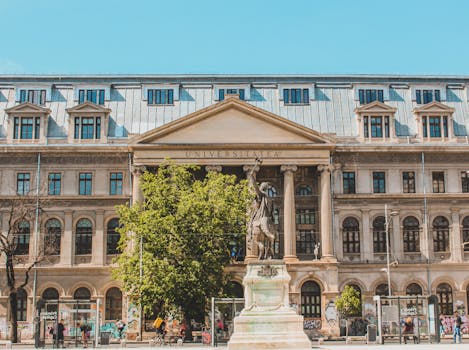
Traveling Through Time: How Europe’s Historical Heritage Shapes Modern Lifestyles in 2025
Introduction to Europe’s Historical Heritage
Traveling Through Time: How Europe’s Historical Heritage Shapes Modern Lifestyles in 2025. Europe, with its vast and diverse history, has been a melting pot of cultures, empires, and ideologies for centuries. The continent’s historical heritage is a rich tapestry of architectural marvels, artistic masterpieces, and cultural traditions that have been passed down through generations. In this article, we will explore how Europe’s historical heritage continues to shape modern lifestyles in 2025, from the way we live and work to the way we interact with each other and the environment.
The Influence of Historical Architecture on Modern Lifestyles
One of the most visible ways in which Europe’s historical heritage shapes modern lifestyles is through its architecture. Many European cities are filled with historic buildings, landmarks, and monuments that have been preserved and restored to their former glory. These structures not only serve as a reminder of the past but also continue to influence the way we design and build our modern cities. For example, the ancient Romans’ use of arches and domes can be seen in many modern buildings, while the Gothic cathedrals of the Middle Ages continue to inspire contemporary architects.
In addition to their aesthetic appeal, historical buildings also play a significant role in shaping modern lifestyles by providing a sense of community and identity. Many European cities have historic city centers that are filled with narrow streets, quaint shops, and bustling markets. These areas are often the heart of the city, where locals and tourists alike come to experience the unique culture and atmosphere of the place. By preserving and restoring these historic areas, cities can maintain a sense of continuity with the past while also embracing the needs and challenges of the present.
The Impact of Art and Culture on Modern Lifestyles
Europe’s historical heritage is not just limited to its architecture; the continent is also home to some of the world’s most famous and influential art and cultural movements. From the Renaissance to the Enlightenment, Europe has been at the forefront of artistic and intellectual innovation, producing some of the most iconic works of art, literature, and music in human history. These cultural movements continue to shape modern lifestyles in 2025, inspiring new generations of artists, writers, and musicians.
In addition to their aesthetic appeal, art and culture also play a significant role in shaping modern lifestyles by providing a common language and shared values. Europe’s rich cultural heritage has given rise to a unique set of customs, traditions, and beliefs that are shared across the continent. For example, the concept of democracy, which originated in ancient Greece, continues to shape modern politics and governance in Europe and beyond. Similarly, the ideals of the Enlightenment, such as reason, tolerance, and individual liberty, remain core values of modern European society.
The Role of Cuisine in Shaping Modern Lifestyles
Finally, Europe’s historical heritage also shapes modern lifestyles through its cuisine. The continent is home to a diverse range of culinary traditions, from the rich sauces of French cuisine to the bold flavors of Italian cooking. These culinary traditions are not just a reflection of the past but also continue to evolve and adapt to the needs and tastes of modern society. For example, the rise of veganism and vegetarianism has led to a renewed interest in traditional European dishes that are plant-based and sustainable.
In conclusion, Europe’s historical heritage continues to shape modern lifestyles in 2025, from the way we live and work to the way we interact with each other and the environment. By preserving and restoring its historical buildings, promoting its art and culture, and celebrating its culinary traditions, Europe can maintain a sense of continuity with the past while also embracing the needs and challenges of the present. As we look to the future, it is clear that Europe’s historical heritage will continue to play a vital role in shaping modern lifestyles, inspiring new generations of artists, writers, and innovators.
Conclusion
Traveling Through Time: How Europe’s Historical Heritage Shapes Modern Lifestyles in 2025. In conclusion, Europe’s historical heritage is a rich and diverse tapestry that continues to shape modern lifestyles in 2025. From its architecture to its art and cuisine, the continent’s past is a source of inspiration, identity, and community. As we look to the future, it is clear that Europe’s historical heritage will continue to play a vital role in shaping modern lifestyles, promoting a sense of continuity with the past while also embracing the needs and challenges of the present.






